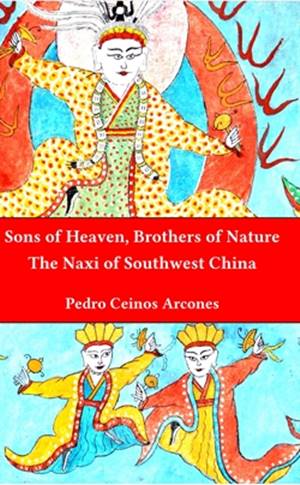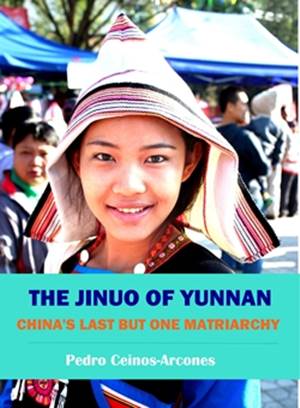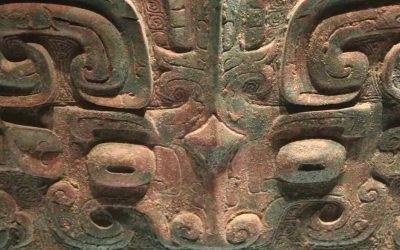Peter Harvey. Buddhism: Teachings, History and Practices. Cambridge University Press. 2013.
(Excerpts from the book. Page 11 and ff.)
In its origin, Buddhism was a Samana-movement. Samanas were wandering ‘renunciant’ thinkers who were somewhat akin to the early Greek philosophers and mystics. The Samanas rejected the Vedic tradition and wandered free of family ties, living by alms, in order to think, debate and investigate. The main Samana groups of Buddha’s time were:
JAINS
Jainism was founded, or at least led in the Buddha’s day, by Vardhamāna the Mahāvīra, or ‘Great Hero’. It teaches that all things, even stones, are alive, each containing a Jīva, or ‘Life-principle’. These are seen as individually distinct, rather like the Western idea of a ‘soul’ but unlike the universal Ātman of the Upanisads, and to be naturally bright, omniscient and blissful. The aim of Jainism is to liberate one’s Jīva from the round of rebirths by freeing it from being weighed down by an encrustation of karma, seen as a kind of subtle matter. The methods of doing so are primarily austerities such as fasting, going unwashed and pulling out the hair, so as to wear out the results of previous karma, and self-restraint, total non-violence to any form of life, and vegetarianism, so as to avoid the generation of new karma. The free-will of the Jīva is emphasized, though even actions such as unintentionally killing an insect are held to generate karma.
AJIVIKAS
Their founder was Makkhali Gosāla (Skt Maskarin Gośāla). Gosāla’s key doctrine was that niyati, or impersonal ‘destiny’, governed all, such that humans had no ability to affect their future lives by their karma: actions were not freely done, but were determined by niyati. Gosāla thus believed in rebirth, but not in the principle of karma as that which regulates the level of a person’s rebirth. The ‘Life-principles’ of living beings are driven by niyati alone through a fixed progression of types of rebirths, from a low form of animal to an advanced human who becomes an Ājīvika ascetic. The Ājīvikas practised rigorous asceticism such as fasting, nakedness and perhaps also disfiguring initiations, and aimed to die by self-starvation (as Vardhamāna in fact did), as a fitting way to end their last rebirth.
MATERIALISTS
The Materialists’ aim was to lead an abstemious, balanced life which enjoyed simple pleasures and the satisfaction of human relationships. They denied any kind of self other than one which could be directly perceived, and held that this was annihilated at death. They therefore denied the idea of rebirth, and also those of karma and niyati. Each act was seen as a spontaneous event without karmic effects, and spiritual progression was not seen as possible.
SKEPTICS
The Skeptics responded to the welter of conflicting theories on religious and philosophical issues, and the consequent arguments, by avoiding commitment to any point of view, so as to preserve peace of mind. They held that knowledge on such matters was impossible, and would not even commit themselves to saying that other people’s views were wrong. The Buddha saw this evasive stance as ‘eelwriggling’, though he shared the wish to step aside from the ‘jungle’ of conflicting views, and avoid dogmatic assertions built on flimsy grounds.
More posts on Chinese culture
What if China’s history had been precipitated by the eruption of a volcano in Greece?
What if China's history had been precipitated by the eruption of a volcano in Greece? Although in present times there is greater concern about global phenomena, it is not that they did not happen before. Some natural catastrophes in the past were so violent that they...
Lao She Cat Country
Cat Country - Lao She Sometimes we say that a poet or a writer writes with his blood, and there are many occasions in which writers end up paying with their lives for having written a book. This is possibly one of them, and we can say that Lao She paid with his life...
The top 10 gods in 20th century Sichuan
he top 10 deities in 20th century Sichuan And we assume that there will be no major differences with the most popular ones in other parts of China, except on the coast, where the Empress of Heaven (Tianhuo), patron goddess of sailors, would be in the leading...
Notes on Chinese Medicine
Notes on the Chinese Medicine Chinese medicine is the most important non-Western medicine, and it is the only one of the medicines developed by non-Western countries that has managed, throughout history, to face the continuous achievements and advances of Western...
The world of Shanghai courtesans
The world of Shanghai courtesans The Sing-song girls of Shanghai. A novel by Han Bangqing. The action of this novel takes place, as its title indicates, in the world of the singing girls of Shanghai, of which it is also a description. The singing girls were a type of...
Diao Yinan-The Lake of the Wild Goose
Diao Yinan-The Lake of the Wild Goose In short, a film to watch and enjoy. An original plot, very well handled, moves the protagonists through degraded urban environments, in which the mastery of the artistic team manages to endow a naive beauty. The action begins at...
More posts on China ethnic groups
The main branches of the Yao Nationality
The main branches of the Yao Nationality The Yao are extended in a wide area of Southeast Asia, as Fei Xiaotong (1), one of the first anthropologists to study them, asserts: "The Yaos characteristically lived in small, widely-scattered communities. The Yaos of Guangxi...
The Yao nationality puzzle
The Yao puzzle The Yao are one of the indigenous peoples of China remarkable for the following characters: - Big population. According to the 2000 census there were 2,600,000 Yao only in China. - Big dispersion. The Yao are dispersed for all the provinces of South...
Jinxiu Yao Autonomous County
Jinxiu Yao Autonomous County It was established in 1952 with the name of Dayaoshan (Big Mountain of the Yao) Autonomous Zone, but in 1966 the name was changed to Jinxiu Yao Autonomous County. It is a mountainous county with rugged lands and a climate hot and wet. It...
Different marriages of the Yao people
Different marriages of the Yao people Among the Yao there are different kinds of marriage, though all they have some common characteristics: - They use antiphonal songs to court each other. - They have the freedom to choose their love partners, but they not have...
The drum of the clan among the Balou Yao
The drum of the clan among the Balou Yao The Yao are one of the peoples who inhabit the mountains of southern China. They are composed of numerous branches, with languages and cultures that are quite different. One branch of the branches is known as White Pants Yao...
The religion of the Pai Yao
The religion of the Pai Yao The Pai Yao living in Liannan County believe that the world is populated by a multitude of spirits that they roughly divide into big and small spirits. According to their behavior regarding human beings, they are classified also as good or...















